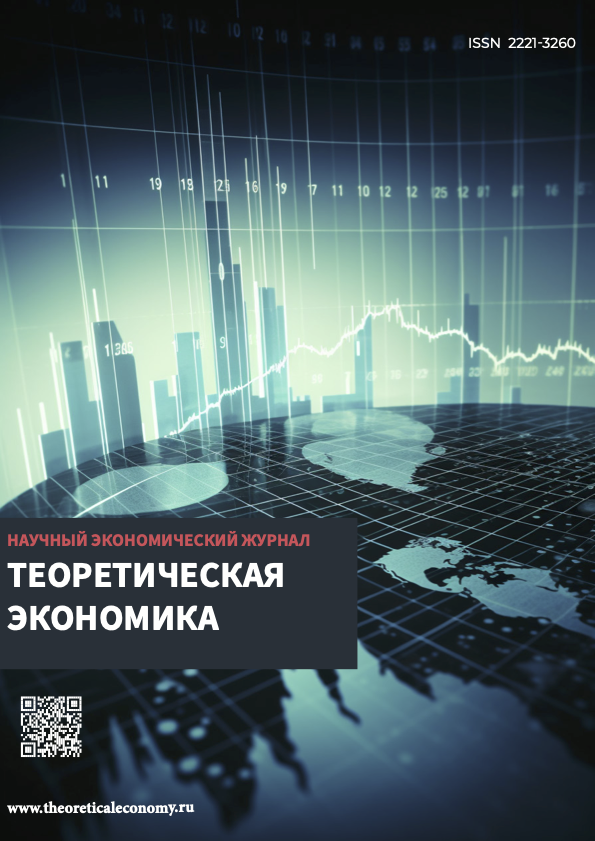Yaroslavl, Yaroslavl, Russian Federation
Yaroslavl', Yaroslavl, Russian Federation
The article examines the phenomenon of intergenerational educational mobility, which characterizes the strength of the relationship between the level and dynamics of descendants' education and similar indicators of their parents. The authors present the theoretical framework on mechanism of reproduction of inequality in society, detailed by three levels of substantiation: psychological, institutional and objective-economic reproduction of inequality. The authors investigated 2 types of intergenerational mobility: absolute mobility and relative mobility using relevant measures of mobility in economies with different income levels. Three modifications of the Great Gatsby curve were analyzed in terms of the degree of influence of inequality on educational mobility: for low-income economies, dependence on the dynamics of multidimensional poverty was revealed; for economies with a high level of income, the dependence of mobility on inequality in income distribution (through the Gini index) was revealed; for the entire set of countries, the dependence of mobility on inequality in income distribution (through the Gini index) was also revealed.
intergenerational mobility; inequality of opportunity; income inequality; poverty; Great Gatsby curve; The Global Multidimensional Poverty Index.
1. R. der Weide, Ch. Lakner, D. Mahler, A. Narayan, R. Ramasubbaiah, Intergenerational Mobility around the World. World Bank Group. Policy Research Working Paper 9707. June 2021. 47 P.
2. OECD. Divided We Stand: Why Inequality Keeps Rising. Paris: Organization for Economic Cooperation and Development. 2011. 389 P.
3. Corak M., Income Inequality, Equality of Opportunity, and Intergenerational Mobility // IZA Discussion Paper No. 7520. July 2013. 31 P.
4. Corak M., Do Poor Children Become Poor Adults? Lessons from a Cross Country Comparison of Generational Earnings Mobility // IZA Discussion Paper No. 1993. March 2006. 67 P.
5. Buduschee uzhe nastupilo. Doklad ob ustoychivom razvitii v mire 2019. Organizaciya Ob'edinennyh Naciy. 268 s.
6. Steven N. Durlauf, Ananth Sechadri, Understanding the Great Gatsby Curve. NBER Macroeconomics Annual 32, Issue 1, 2017. P. 333-393.
7. S. N. Durlauf, A. Kourtellos, Ch. M. Tan, The Great Gatsby Curve. National Bureau of Economic Research. Working Paper 29761, February 2022. 66 P.
8. G. Mankiw, Observations on the Great Gatsby Curve. Greg Mankiw’s Blog. July 18, 2013 [website]. URL: https://gregmankiw.blogspot.com/2013/07/some-observations-on-great-gatsby-curve.html (data obrascheniya: 05.02.2023).
9. Sakamoto, A., Rarick, J., Woo, H. et al. What underlies the Great Gatsby Curve? Psychological micro-foundations of the “vicious circle” of poverty. Mind Soc 13, 195-211 (2014). https://doi.org/10.1007/s11299-014-0144-x
10. Beyond income, beyond averages, beyond today: Inequalities in human development in the 21st century. Human development report 2019. United Nations Development Programme. 366 P.
11. Uncertain Times, Unsettled Lives: Shaping our Future in a Transforming World. Human development report 2021/2022. United Nations Development Programme. 320 P.
12. World Bank. 2021. Global Database on Intergenerational Mobility. Washington, D.C.: World Bank Group. URL: https://datacatalog.worldbank.org/search/dataset/0050771/global-database-on-intergenerational-mobility (data obrascheniya: 01.02.2023).
13. International Standard Classification of Education ISCED. Unesco. United Nations. 2012. 88 P.
14. Unpacking deprivation bundles to reduce multidimensional poverty. Global Multidimensional Poverty Index 2022. UNDP, OPHI. 2022. 44 P.
15. The World Bank. Data. Indicators. URL: https://data.worldbank.org/indicator?tab=all (data obrascheniya: 24.02.2023).
 This work is licensed under Creative Commons Attribution-NonCommercial-NoDerivatives 4.0 International
This work is licensed under Creative Commons Attribution-NonCommercial-NoDerivatives 4.0 International












